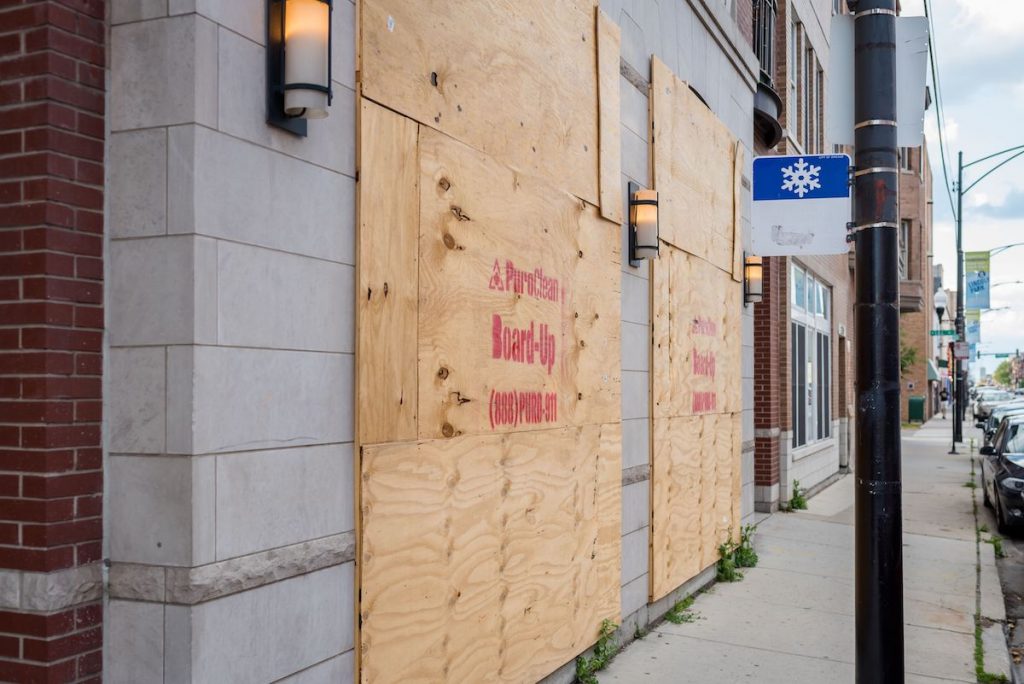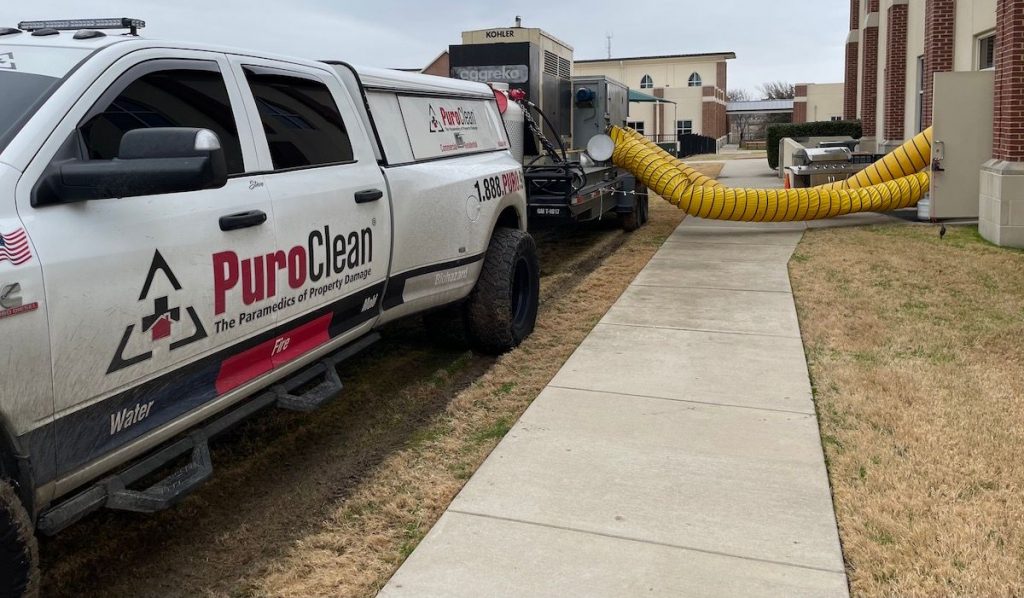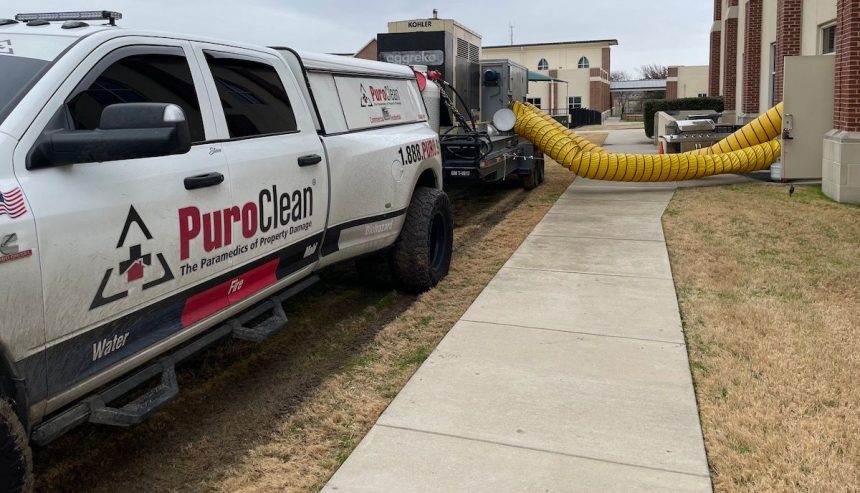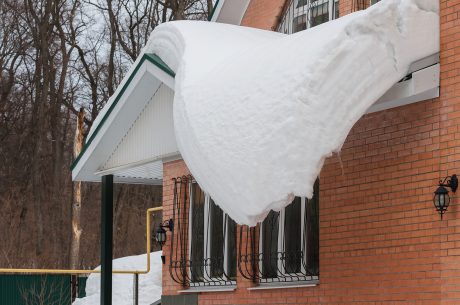Some people avoid disasters at all costs, and understandably so. But other people… they run towards them. Keegan Trudgen, co-owner of several PuroClean Disaster Service locations throughout Chicagoland, is naturally compelled to help those who are impacted by property damage disasters. Whether from fire and smoke damage, water damage, mold, and biohazard issues, or when nature deals with its most devastating catastrophes, Keegan and his crews eagerly travel across the country to help families and businesses with hurricanes and winter storm property damage response.
“It’s always been a part of our DNA; we’re driven by disaster,” says Keegan. Since 2011, he and his crew have deployed to help in multiple nationwide efforts after major storms in the United States.
Not Our First Rodeo

Although Keegan is an owner of four PuroClean locations in Illinois and one in Wisconsin, he’s also a devoted husband and dad and an active member of his community. His employees have families and commitments of their own. However, he and his team all know that if they truly want to help as many people as they can, they need to go where the disasters happen. “Traveling is just part of what we do,” says Keegan, “It’s not our first rodeo.”
In fact, dating back to when Keegan first took ownership of his first PuroClean franchise, he and his team have played active roles in national disaster responses both near and far. When Hurricane Irene devastated the east coast of the United States in late August 2011, his team spent weeks there, helping numerous families rebuild.
These experiences shaped the way Keegan decided he was going to operate his business. National disaster response is one facet of the organization that is now built into their business model. Each year, they expect to be deployed anywhere they’re needed in the U.S. after a major disaster. Keegan says, “it’s not uncommon for us to go one or two times per year on these missions.”
Teamwork at Home or Afar

One can’t help but to wonder, then, just how big is this team? “Big enough,” Keegan jokes. “Our team is big enough to handle multiple projects because we have several project managers that can typically handle 1-2 projects at a time. We can hire temporary labor and vendor suppliers who bring power and equipment, temporary roofs, and things of that nature. Our team is very resourceful to maximize [our] human power.”
However, despite the desire to help everyone possible, Keegan and his team know they can’t simply go chasing every disaster. Resources are often limited and, even though they aren’t confined to their service areas, if there’s a lot of work to be done around Chicagoland or Milwaukee, those local jobs will always take priority.
The decision to send a team to a disaster site is never an easy one, and, as they learned from experience, there is a downside to being over-eager. Keegan recounts the time when St. Louis was struck with record-setting flooding, and he and his team traveled down to Missouri to help, only to find that most of the impacted areas were simply cornfields. Of course, corn is important… but the Disaster Services team’s resources, time, and expertise are better suited to helping people’s homes and businesses. There wasn’t much they were able to do for the crops, so back home they went.
Nationwide Disaster Response
Critics may say 2020 itself was a disaster, between the COVID-19 pandemic, natural disasters, wild weather, and other issues we dealt with throughout the country. However, all the rest aside, 2020 was historically one of the most active hurricane seasons on record, and it’s no surprise that Keegan and his team put themselves on the frontlines to help rebuilding efforts. Louisiana found itself in the crosshairs of multiple major hurricanes that year, the first of which, Hurricane Laura, was particularly destructive. The team traveled to Lake Charles and spent six weeks helping the community rebuild.
During their time in the Bayou State, they took on a massive restoration project. A local assisted living facility suffered intense damage. Thankfully, the residents were evacuated to safety before the storm hit, but the conditions were so poor that they could not return to a safe environment. Keegan and his team spent two weeks working on this one project to assure that the residents would come home to the safety, comfort, and security they needed.
Unfortunately, before the 2020 hurricane season ended, Louisiana was hit repeatedly by a series of powerful storms. Hurricane Delta would essentially follow the same path as its predecessor, Laura, re-affecting areas that were still trying to recover. And so Keegan and his team went back to Louisiana for three more weeks to help the area that seemingly could not catch a break from Mother Nature.
Even the Ice is Bigger in Texas

As hurricane season passed and 2020 matured into 2021, another natural disaster soon followed. In February, two massive polar vortexes rampaged Texas, turning the Lone Star State into a frozen tundra. For weeks, homes and businesses were buried under snow and ice, and millions of residents were left without power. Keegan knew this was an essential time for his team to join in the recovery effort.
Texas is simply not built for winter storms, and the extent of the damage proved it. In the north, most plumbing is made of sturdy metals, but in Texas, their pipes are made of PVC (Polyvinyl chloride,) a synthetic material that resembles a thick plastic. In the typical subtropical climate, this is sufficient, but when a winter storm comes through, problems will arise. When water reaches sub-freezing temperatures inside the PVC pipes, it will expand until the pipes burst. This phenomenon was so widespread that Keegan recalled that it seemed like “every building in Dallas had at least one burst pipe.”
His team spent five weeks helping the people of Texas recover from their unprecedented trauma. During this time, they helped rebuild an office building whose tin roof collapsed under the weight of the ice and snow. When the roof caved in, all of the ice melted on the inside and soaked the interior, causing severe water damage. PuroClean spent three weeks on this particular job, but by the time they left, all evidence that there had ever been any damage was completely gone.
Every Storm is Different
When the 2021 hurricane season rolled around, the northeast became the latest region to be affected by weather patterns they were ill-equipped to handle. In September, Hurricane Ida brought torrential rains and floods to New York, New Jersey, and surrounding communities. Without hesitation, Keegan rallied his crew and ventured to the embattled areas to alleviate the damage from the floodwaters.
The damage from Hurricane Ida differed greatly from that of Hurricanes Laura and Delta. “Every storm is different. I’m not an expert in meteorology but my experience tells me that they don’t all comfortably fit into the same mold,” said Keegan. He described Hurricane Laura as more of a wind-driven catastrophe, while Hurricane Ida was much more flood-centered. Additionally, the water in the northeast was very dirty, as it carried a lot of silt within it.
Lessons Learned
It can be a heavy emotional burden to bear, witnessing disaster after disaster. Undoubtedly, seeing families uprooted and livelihoods destroyed can take a toll on the strongest people. Keegan’s experience has gifted him with a perspective that helps him grow with each challenge because he sees the resiliency of the communities to which he travels.
“When we get there, it’s important to remember that [even though] we’re just visiting, these are actual homes [of] real people. They want to tell you their story,” Keegan says with a smile. “They actually want to explain themselves, most of the time. ‘We swear it doesn’t always look like this!’ is something we hear all the time. It’s actually kind of encouraging to see that people can still make lighthearted jokes in their situations.”
Most of the people who are impacted by disasters are experiencing catastrophic events for the first time, and they turn to the team’s experience for a steady hand to guide them. “They have a lot of questions, like where are they going to stay? Maybe they evacuated and came back to the devastation and are seeing it for the first time, too. A lot of it can be traumatic.”
The most profound lesson that Keegan says he has learned from his experience is to appreciate everything because, ultimately, we are all fragile. “You learn a lot about people, and you learn how fragile we are. A hurricane is big, but it doesn’t take much to show that nothing is permanent,” says Keegan. Which is why he and the whole team at PuroClean do what they do: they are driven by disaster but compelled by humanity.




 PuroClean of Orland Park
PuroClean of Orland Park